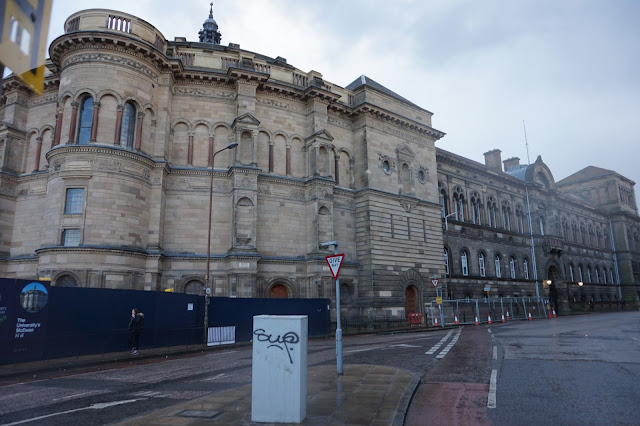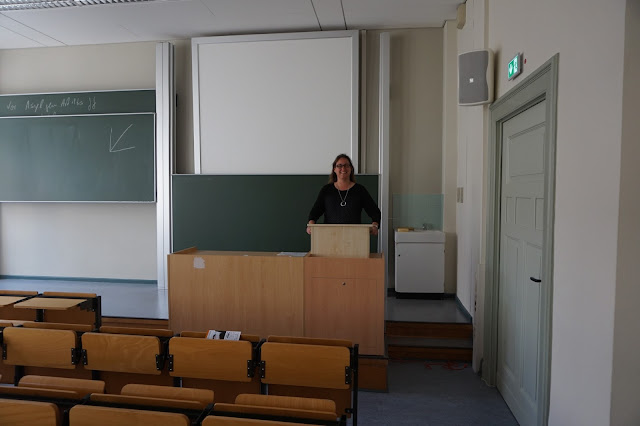James Clerk Maxwell (1831-1879) is comparable to Isaac Newton and Albert Einstein in terms of the importance of his work, but he is not as well known. As well as being a mathematician and mathematical physicist he was a published poet, and his Christian faith was central to his life.
It was in 1861 that he unified electricity, magnetism and light with his equations, so the 150th anniversary of this discovery was recently celebrated. The year 2011 was quite a year of anniversaries in physics, from Boyle's publication of "Sceptical Chymist" to the discovery of superconductors to Rutherford's model of the atom and more!
I said earlier that Maxwell is comparable to Einstein and Newton. I think this quote from a 2011 article in The Economist puts it well:
"Worthy intellectual accomplishments, all. Yet they pale in comparison with Maxwell's. This is not just because, unlike a lot of subsequent theoretical advances, his insight has already yielded a century's worth of tangible results, from radio to mobile phones. (Only a century because it took scientists several decades before they had grasped the theory's full significance and put it into practice.) . . . . He showed that nature ought not to be taken at face value, and that she can be cajoled into revealing her hidden charms so long as the entreaties are whispered in mathematical verse. In doing so he paved the way for the pursuit of physicists' holy grail: the grand unified theory, a set of equations which would explain all there is to know about physical reality. . . . Maxwell remains the great unsung hero of human progress . . . . His life's work, which also includes remarkable contributions to thermodynamics (not to mention taking the world's first colour photograph, also 150 years ago) is among the most enduring scientific legacies of all time, on a par with his more widely acclaimed peers, Isaac Newton and Albert Einstein. It deserves to be trumpeted."
I said earlier that Maxwell is comparable to Einstein and Newton. I think this quote from a 2011 article in The Economist puts it well:
"Worthy intellectual accomplishments, all. Yet they pale in comparison with Maxwell's. This is not just because, unlike a lot of subsequent theoretical advances, his insight has already yielded a century's worth of tangible results, from radio to mobile phones. (Only a century because it took scientists several decades before they had grasped the theory's full significance and put it into practice.) . . . . He showed that nature ought not to be taken at face value, and that she can be cajoled into revealing her hidden charms so long as the entreaties are whispered in mathematical verse. In doing so he paved the way for the pursuit of physicists' holy grail: the grand unified theory, a set of equations which would explain all there is to know about physical reality. . . . Maxwell remains the great unsung hero of human progress . . . . His life's work, which also includes remarkable contributions to thermodynamics (not to mention taking the world's first colour photograph, also 150 years ago) is among the most enduring scientific legacies of all time, on a par with his more widely acclaimed peers, Isaac Newton and Albert Einstein. It deserves to be trumpeted."
Maxwell was born at the house pictured above, at 14 India Street, Edinburgh, though not long after his birth his family moved to their home in Glenlair in the countryside of Scotland where his natural curiosity was soon apparent, and he always wanted to know how everything worked. The family planned his education to be carried out by his mother until it was time for him to attend Edinburgh University. Sadly, his mother died when he was 8 years old, and, after an unsuccessful attempt at having a tutor work with him at home, he was sent to the Edinburgh Academy.
Maxwell was 14 years old when he wrote his first mathematical paper, an exploration of the ellipse and of curves with more than two foci. This work was read to the Royal Society of Edinburgh, though not by Maxwell, as he was considered too young to present his work.
At age 18, while attending the University of Edinburgh, he wrote two further papers for the Transactions of Edinburgh's Royal Society, but he was still considered too young to read them, so they were read to the society by his tutor instead.
 |
| Main Campus, Edinburgh University |
 Though Maxwell had chosen to do his undergraduate work at Edinburgh University he did head to Cambridge for his graduate work and earned his degree in mathematics there. In the famous tripos testing he earned the position of "second wrangler." He is better known as a physicist or a mathematical physicist but his degree was in mathematics.  | ||||
Looking down on Trinity from Great St. Mary's - Clock Tower, Chapel, Great Gate
While a student at Trinity he decided to examine his faith deeply. He wrote:
"Now my great plan, which was conceived of old, . . . is to let nothing be wilfully left unexamined. Nothing is to be holy ground consecrated to Stationary Faith, whether positive or negative. All fallow land is to be ploughed up and a regular system of rotation followed. . . . Never hide anything, be it weed or no, nor seem to wish it hidden. . . . Again I assert the Right of Trespass on any plot of Holy Ground which any man has set apart. . . . Christianity — that is, the religion of the Bible — is the only scheme or form of belief which disavows any possessions on such a tenure. Here alone all is free. You may fly to the ends of the world and find no God but the Author of Salvation. You may search the Scriptures and not find a text to stop you in your explorations . . ."
He was elected a fellow of Trinity - eventually also accepted a professorship in Marischal College in Aberdeen, Scotland - and later moved to London and became professor at King's College there. His time in London was a very productive period of his life - perhaps the most productive.
He resigned his chair there in 1865 and returned to his Scottish family home with his wife, but in 1871 he accepted, somewhat reluctantly, an offer from Cambridge to be the first Cavendish Professor of Physics. He was there in charge of developing the Cavendish Laboratory, overseeing every element of its construction and design.
The photographs below are of the "Maxwell Lecture Theatre" in the Old Cavendish (which currently belongs to the Sociology Department, and for a time until quite recently had been being used for storage; the fate of this historic hall is uncertain at this point.)
Maxwell died of cancer at the age of 48 in Cambridge. He remained calm and firm in his faith through to the end.
*********************************************************************
Edinburgh University has expanded over time, and in 1919 an area to the south of the town of Edinburgh was purchased for the relocation and expansion of its science departments. One of the buildings here is named for Maxwell. (You can see more about Edinburgh's Universities at this link.)
In his youth, while at the Edinburgh Academy, Maxwell had a bit of a rough start socially. He was looked upon by some of the other students as a bit of a "country bumpkin" and because of that had the nickname "Dafty," which didn't seem to bother him. Eventually he met two other boys who were close in age and intellect to him who remained lifelong friends. One of these was the future mathematician Peter Guthrie Tait (1831-1901), who, along with Maxwell and Thompson (aka Lord Kelvin) pursued topology and knot theory for a time. When I read the following poem I see a confluence of Maxwell's faith and his work - knots, divine intellect, higher dimensions and the soul.
My soul is an entangled knot,
Upon a liquid vortex wrought
By Intellect, in the Unseen residing,
And thine cloth like a convict sit,
With marlinspike untwisting it,
Only to find its knottiness abiding;
Since all the tools for its untying
In four-dimensional space are lying
Full poem can be found at this link.
|




















































